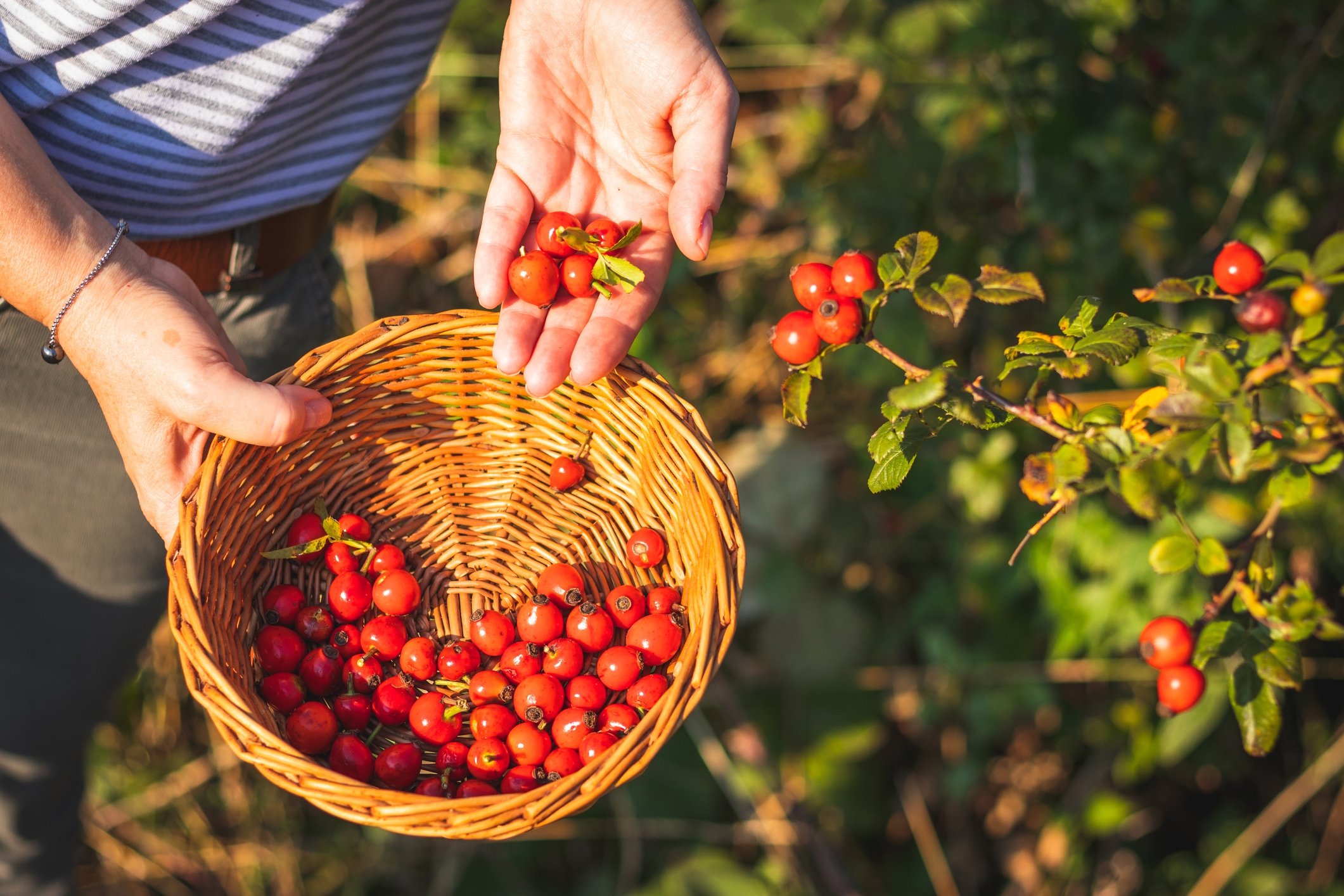Rosehip
Rosehips, the vibrant fruit of the rose plant, are cherished gems in wild foraging, culinary, and medicinal circles. Ranging in color from deep red to orange and even black in some species, these fruits boast a tartness complemented by a unique sweetness. Found globally, including in the diverse landscapes of Alberta, rosehips are a testament to the rose plant's beauty even after its iconic blossoms fade. Rich in vitamin C, flavonoids, and other essential nutrients, rosehips have carved a niche in the health and gastronomic worlds alike.

More on Rosehip
About
Every rose plant culminates its blooming cycle by producing rosehips. These small, round to oval-shaped fruits are the rose's way of propagating its species, as each hip is packed with seeds. In Alberta's wilds, various species of wild roses, like Rosa acicularis (the provincial flower of Alberta) and others, yield these flavorful fruits.
While most people associate roses with ornamental purposes, the hips are a treasure trove of nutrition. The robustness of these fruits is evident in their ability to survive and thrive in Alberta's challenging winter conditions. In fact, cold snaps can enhance their sweetness, making post-frost foraging a sought-after activity.
History
Long before modern culinary trends began celebrating rosehips, Indigenous communities across Canada, including Alberta, recognized and utilized their benefits. They are consumed for sustenance, brewed into teas, and integrated into medicinal remedies. The hips serve as a vital vitamin C source, especially during winter months when other sources are scarce.
As cultures converged in Alberta and broader Canada, the knowledge of rosehips spread. They gained prominence during times of citrus shortages, like during war periods, as a substitute for vitamin C. Today, while modern agriculture provides an abundance of fruits year-round, rosehips are still cherished for their nostalgic, cultural, and health value.
Ways To Cook
Rosehips are a versatile ingredient, making them suitable for a wide array of preparations:
- Raw Consumption: While they can be eaten raw, it's essential to remove the inner hairy seeds, which can cause irritation.
- Rosehip Tea: One of the most common preparations, simply steeping dried or fresh hips produces a tangy and revitalizing tea.
- Jams and Preserves: Their natural tartness balances the sweetness in jams, jellies, and preserves.
- Baking: They can be incorporated into pies, tarts, and muffins for a tangy twist.
- Syrups and Sauces: Boiled with sugar, they create flavorful syrups for desserts, beverages, or savory dishes.
- Soups: In some traditions, like in Scandinavian cuisines, rosehips are transformed into rich, sweet soups.
- Oils and Skincare: Extracted oil from rosehips is rich in essential fatty acids, making it a popular skincare ingredient.
Foragers in Alberta often advise harvesting rosehips after the first frost, as the cold enhances their sweetness. Proper identification and sustainable foraging practices ensure the continued abundance of these fruits for future seasons.
